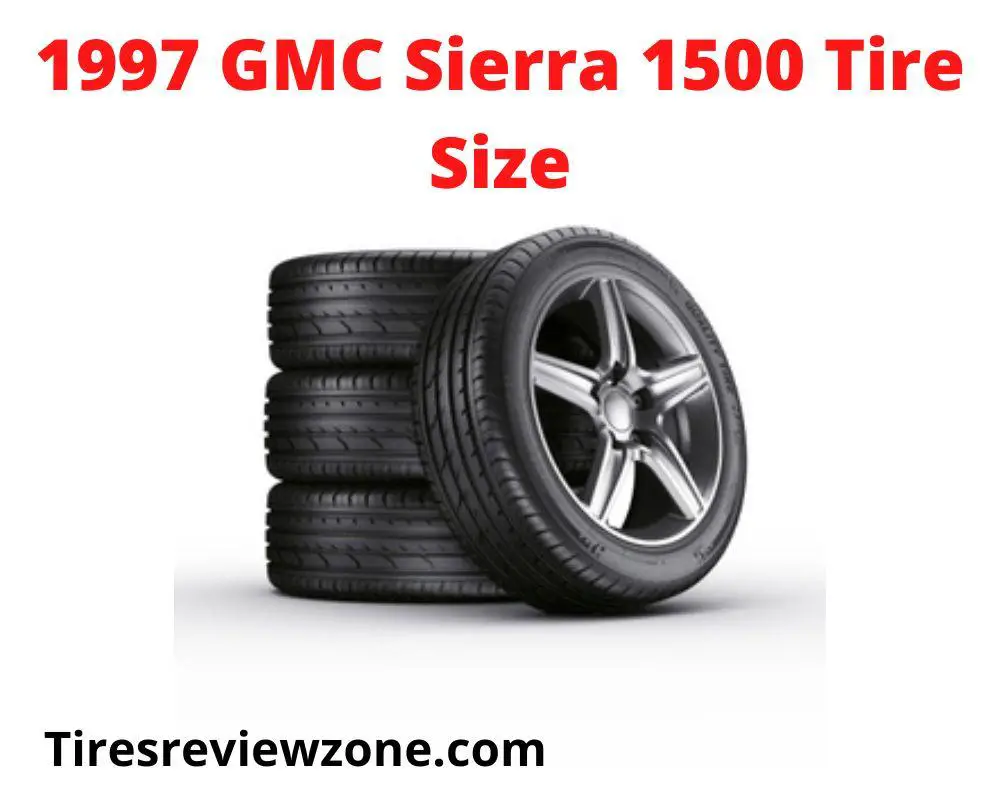When it comes to the 1997 GMC Sierra 1500 tire size, there are a few things you need to know to ensure that you get the right fit. The size of your tires is essential for safety and how your truck handles and performs on the road. In the following blog post, we will tell you about the different sizes and types of tires available for your 1997 GMC Sierra 1500 and how to choose the right ones for your truck!
What is the proper tire size for a 1997 GMC Sierra 1500?
There is no single “proper” tire size for the 1997 GMC Sierra 1500; the ideal sizing depends on various factors, including the vehicle’s weight and payload capacity and the driver’s preferred driving style. However, most experts recommend that motorists choose tires that are neither too small nor too large for their vehicles. Taller and wider tires can provide better traction and stability, while smaller tires may improve fuel economy. Ultimately, the best way to determine the proper tire size for your specific truck is to consult with a qualified automotive technician or speak to a representative from your local tire retailer.
What are some of the benefits of using the correct tire size for my truck?
There are a few benefits to using the correct tire size for your truck. You’ll get a better fuel economy since you won’t be working harder than you need to. You’ll also avoid putting unnecessary strain on your vehicle’s engine, suspension, and brakes. And finally, using the correct tire size will help keep your truck riding smoothly and safely.
Is it essential to use the correct tire size for my car or truck?
It is essential to use the correct tire size for your car or truck! Here are a few key reasons why:
- Safety: Incorrectly sized tires can lead to blowouts and other dangerous accidents.
- Fuel efficiency: The wrong tire size can lead to decreased fuel efficiency.
- Ground clearance: If you have too small tires, you could bottom out on rough roads or obstacles.
- Handing: Incorrectly sized tires can negatively affect how your vehicle handles.
In short, using the proper tire size is vital for the safe operation of your vehicle and its overall performance.
Can I put different size tires on my 4×4 truck?
You can put different size tires on your 4×4 truck, but it’s not advisable.
4×4 trucks are typically equipped with larger diameter tires to provide better traction and stability in off-road conditions. Installing smaller diameter tires will decrease the truck’s ground clearance and may cause damage to the vehicle’s suspension system. Additionally, smaller tires will have a lower load capacity than larger tires, leading to tire failure or axle damage if the truck carries heavy loads.
Is it dangerous to use an incorrect tire size on my car?
Incorrect tire size can lead to several dangers, including decreased fuel efficiency, braking performance, and handling performance.
Incorrect tire size can also lead to a dangerous situation in which the tires cannot handle the amount of weight placed on them. For example, if you have a car designed for small tires and you put large tires on it, the large tires will be unable to handle the weight of the car and could potentially burst.
Incorrect tire size can cause premature wear and tear on your vehicle’s suspension system and other critical components. So it’s essential always to use the correct tire size for your car.
Will bigger tires hurt my transmission?
Generally speaking, it depends a lot on what kind of tires you are using and what exact size you are using. For example, installing taller and wider tires on your 1997 GMC Sierra 1500 will put more weight on your vehicle and wear out your transmission without warning. However, if you install narrower and shorter tires, there are fewer tires to contact the road surface, which can cause your vehicle to handle poorly and wear out your brakes more quickly. It’s always good to speak to a pro before you change your tire size because it’ll affect the performance of your car.
What is the best size tire for a 1997 GMC Sierra 1500?
The best size tire for a 1997 GMC Sierra 1500 is a 235/85R16. A larger tire will cause the truck to ride higher and may affect the handling, while a smaller tire will result in decreased durability and shorter tread life.
How do I know what size tires to put on my 1997 GMC Sierra 1500?
There are several factors to consider when it comes to picking the right tires for your GMC Sierra 1500. When choosing the right vehicle, you need to think about what type of driving you will have to do regularly when selecting it. If you’re primarily sticking to city streets and highways, you can probably get away with smaller, less expensive tires. But if you often find yourself off-roading or driving in snow or other rough conditions, you’ll need something a little more durable.
It’s also essential to think about tire size concerning the rest of your SUV. Larger tires can give your Sierra 1500 a more aggressive look, making it harder to handle and increasing fuel consumption.
What is the 1997 GMC sierra 1500 tire pressure?
The proper tire pressure for your 1997 GMC Sierra 1500 depends on your truck’s specific model and trim level. The recommended tire pressure is 30 psi in the front and 35 psi in the rear for most models. However, some models require a higher or lower pressure, so it’s always best to consult your owner’s manual or a certified GMC dealership before changing your truck’s tire pressure.
What bolt pattern is a 1997 GMC 1500?
The 1997 GMC 1500 has a 6-lug bolt pattern. That means that six bolts attach the wheels to the hubs. The bolt pattern comes as a series of numbers, such as 5 x 4.5, which tells you how many bolts there are (in this case, five) and the distance between them (in this case, 4.5 inches).
Conclusion
So, what size tires do you need for your 1997 GMC Sierra 1500? It depends on the driving you plan to do and the look and feel you’re going for. A lower-profile tire is probably best if you want a smooth, comfortable ride with good fuel economy. However, if off-road performance is more your thing, something with a bit more sidewall will give you better traction in rough terrain. We hope this blog helped make your decision about tire size a little easier, but ultimately, you have to decide what fits your truck best. Thanks for reading!

